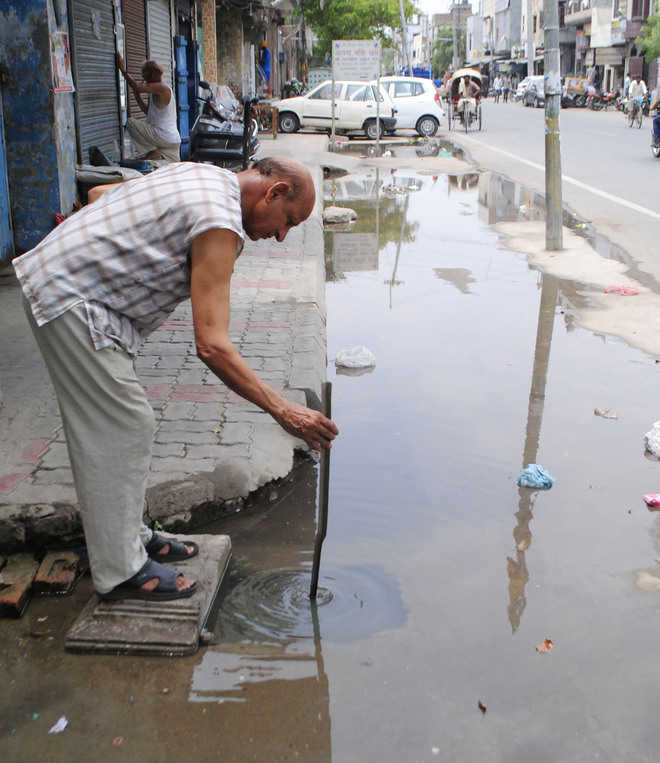Tribune News Service
Amritsar, June 9
With monsoon season round the corner, the low laying areas are likely to witness water accumulation as only 15 per cent city is covered by storm water drains.
Ironically, the government has covered various open nullahs and converted these into sewerage. Earlier, these nullahs used to drain rain water out from the city.
According to information the 15 per cent city storm water drains also includes the sewerage along metro bus lanes, laid under the bus rapid transport system (BRTS) project. The Public Works Department has planned to construct the rain water harvesting plant under the BRTS project.
Apart from this, the walled city has a separate network of storm water drains along major roads, which lie chocked as these have not been de-silted for years altogether.
As per officials of the Municipal Corporation (MC), the Centre government had sanctioned Rs 2.48 crore under the National Heritage City Development and Augmentation Yojana (HRIDAY) for de-silting storm water channels in the walled city. Workers have been carrying out de-silting in the inner area of the city under the project.
Meanwhile, officials of the MC hope that after de-silting of storm water channels in the walled area the issue of rain water accumulation in the city will be addressed.
Charanjit Singh Gumtala from city-based NGO Amritsar Vikas Manch said, “The government has covered open nullahs during the past years, which will affect draining of rain water from the city.”
The walled city and surroundings of Golden Temple are located in the low lying area. There was a natural pond before Guru Ramdas Ji constructed the Darbar Sahib in the late sixteen century. During the British rule, nullahs were dug up to drain rain water out from the city.
The Minister for Local Bodies, Navjot Singh Sidhu, said sewerage and storm water drains of the city would be cleaned before start of the rainy season.
Unlock Exclusive Insights with The Tribune Premium
Take your experience further with Premium access.
Thought-provoking Opinions, Expert Analysis, In-depth Insights and other Member Only Benefits
Already a Member? Sign In Now










